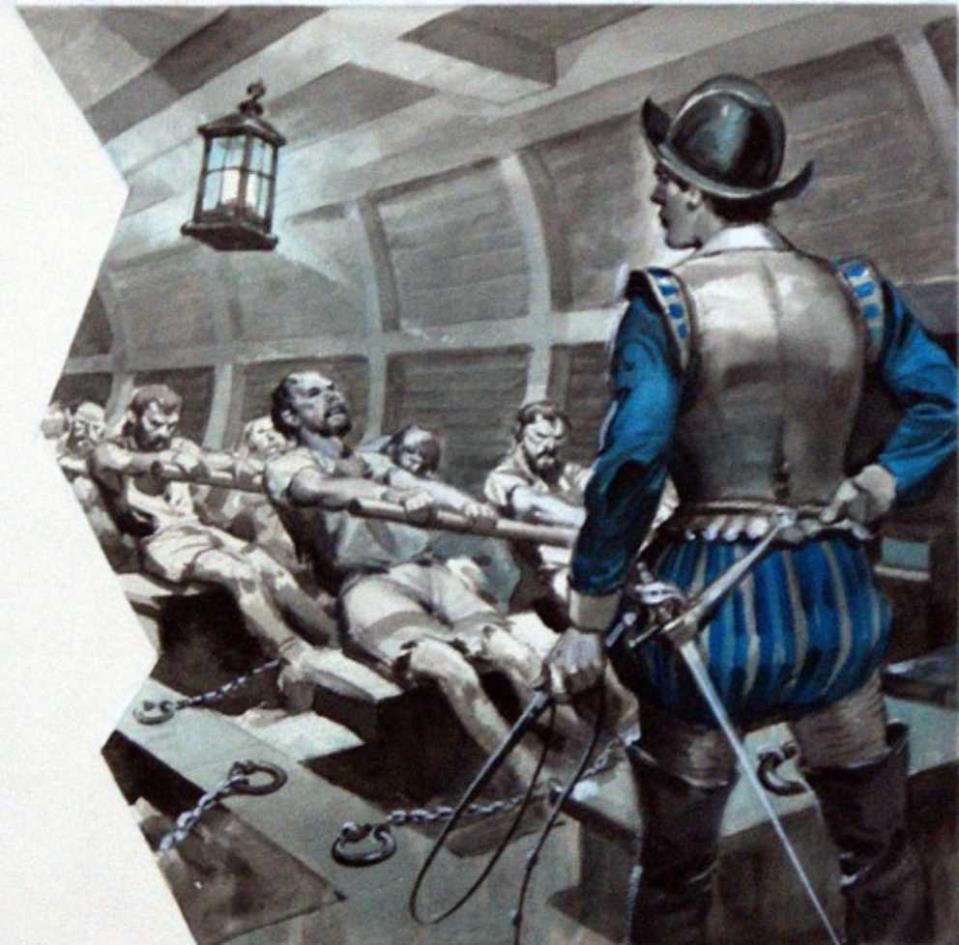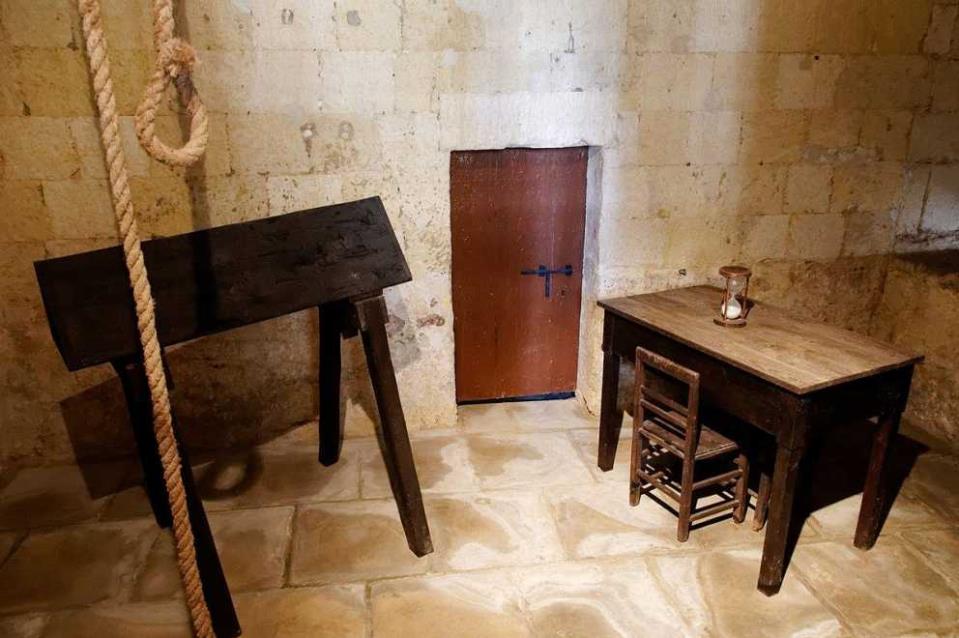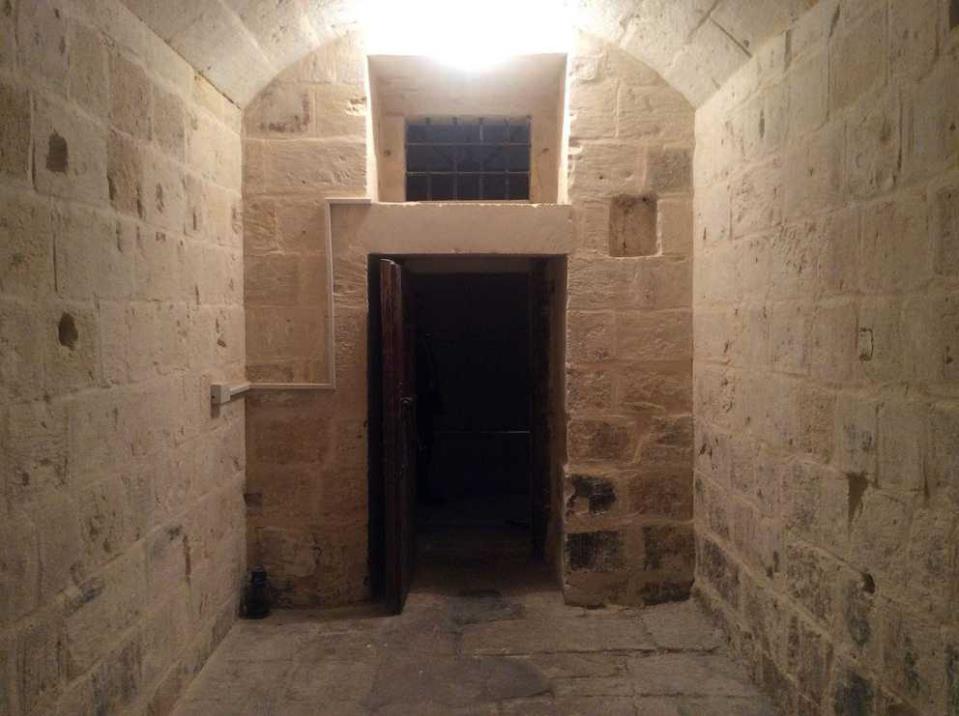One of the most intriguing buildings in Valletta is surely that now housing the Ministry for Health, located on Merchants Street. This palace, formerly the seat of the Magna Curia Castellania - which presided over the civil and criminal courts during the time of the Order of St. John - was built between 1757 and 1760, during the reign of the Portuguese Grand Master Manuel Pinto da Fonseca. Its façade in fact, is adorned by a number of crescent moons taken from Pinto’s coat-of-arms. An even more interesting set of sculptures is that comprising the allegorical figures of Justice and Truth, located above the central balcony - a work which has often been attributed, perhaps mistakenly, to the Italian sculptor Giovanni Vito, although he was almost certainly responsible for other works in the former chapel located in the same building. What is known for a fact however, is that shortly after finishing his work here, Vito would meet a very tragic end, and it would be in this very same building that he would spend the last days of his life.

Although clearly a talented artist, whose work was sought after by the local authorities, Giovanni Vito, also referred to in some documents by his nickname ‘Pugliese’, was serving as a galley rower on one of the ships of the Order. The men who carried out this arduous and dangerous job usually came in three categories. The most common were the slaves, normally Muslim, captured in the numerous naval battles across the Mediterranean and condemned to this fate. Next came the forzati - convicts who had been sentenced to row as punishment for their crimes. Finally, there were the buonavoglia - free men who, at least temporarily, gave up their liberty and dignity in order to pay off debts which they could not otherwise hope to settle. Giovanni Vito fell into this latter category, which perhaps gives an insight into the kind of life he led. Indeed, it was allegedly while heavily intoxicated with alcohol, that on the night of 28th August 1760, he became involved in a fight at the slaves’ prison in Senglea, which resulted in the murder of a fellow buonavoglia, and it was Vito who found himself accused of the crime.

Ominously for Giovanni Vito, the judge to whom this case was assigned was the notorious Giulio Cumbo. Cumbo was known for being very efficient at solving cases brought before him, perhaps because he resorted unsparingly to torture as a way of extracting confessions from the accused. Originally appointed to his position by Grand Master Perellos in 1698, he was still serving as a judge at the time of his death 73 years later, aged 96! During the course of his exceptionally long career, Cumbo sent no less than 120 men to the gallows.
At the time, of course, torture was a recognised method of interrogation, and once it became clear that a suspect was being uncooperative, he would normally be subjected to the ‘tormento della corda‘. The accused’s hands would be tied behind his back, while the other end of the rope would be thrown over a beam. The unfortunate victim could thus be hoisted into the air, resulting not only in excruciating pain, but often also in dislocation of the shoulders. This method was in fact tried on Giovanni Vito, who had strongly refuted the accusations against him, and even now managed to endure the pain and continue to plead his innocence, which only led to the next stage of his torment - the dreaded cavalletto.

The cavalletto consisted of an inverted v-shaped bench, on which the accused was forced to sit astride, often while having weights attached to his feet. When left in this position, often for very long hours, what started as great discomfort would soon turn into agonizing pain and serious injury. Incidentally, this was known to be Giulio Cumbo’s favoured method of interrogation, and the instrument is also known in Malta as iż-Żiemel ta’ Cumbo - Cumbo’s Horse. Giovanno Vito endured two long sessions of the cavalletto on two consecutive days, but despite his undoubted determination, he eventually reached his breaking point, finally admitting to the murder. That was not the end of the story however, as soon afterwards he once again pleaded his innocence, claiming that his confession was a false one, forced out of him because he could not take the pain any longer. Unfortunately for him, it was now too late. Vito’s fate was inevitable: on 12th December 1760, the court sentenced him to be hung, drawn and quartered for the crime of murder, of which he had been found guilty.
Not surprisingly, upon hearing the court’s verdict on the following day, Giovanni Vito broke down in tears, while still pleading his innocence in between sobs. A few days later, together with a number of other prisoners, he was led to the newly opened building of the Castellania, becoming among the first to set foot in this brand new structure, on which he himself had recently worked. As was the practice at the time, the condemned man was taken down to the chapel dedicated to Our Lady of Sorrows, the one he had possibly decorated, to start his reconciliation with God during the last three days of his life. Here, he was assisted by friars whose job it was to comfort him, and to help prepare his soul for the eternal judgement. It was they who would later claim that right up until the very end, Giovanni Vito kept insisting on his innocence, at one point even being overheard praying to God that even though he was not without sin, the murder was something that could not be blamed on him. They, at least, were practically convinced that the wrong man had been convicted.

Early on the morning of 15th December, Giovanni Vito became the first to leave the new Castellania on his way to the gallows, which as usual had been erected just outside the fortifications of Valletta, near the site of the current bus terminus. Up until the late 1870s, executions in Malta were carried out in public, with the intention of serving as a deterrent to other would be offenders. People would flock to try to obtain the best possible vantage points from which to witness the grim and macabre spectacle. As was customary, the condemned man, surrounded by police and accompanied by members of the Confraternity of the Holy Rosary, was taken in procession to where the executioner was waiting. Holding a crucifix and praying fervently, Giovanni made his way up to the scaffold. When his death sentence was read out in Latin, he protested that he could not understand what was being said, and as the noose was placed around his neck, he continued praying, while again insisting on his innocence with such conviction that the Gran Visconte, waiting to give the signal, found himself unable to do so. It fell to Giovanni Vito himself, by now resigned to his fate, to give the nod to the executioner.

As the crowd watched, Vito’s life slowly ebbed away, until after several long terrible minutes, it became clear that all signs of life had left his body. Right up to the very end, he had kept beseeching the help of Jesus Christ and the Virgin Mary. The crowd, who had been watching intently, knew what was coming next. Some however, visibly moved by what they had witnessed, implored the Grand Master to show some clemency and order the executioner to desist from mutilating the body. Pinto, however, was unmoved. As was customary, Giovanni Vito’s lifeless corpse was taken down, before being cut into four quarters, to be put on display in prominent locations: two quarters at each of the slaves’ prisons at Senglea and Birgu, and the remaining two quarters on the fortifications of Senglea point and Fort St. Angelo.
Thus ended the life of 42-year-old Giovanni Vito, a sculptor and galley rower. His death would be talked about for some time, with many wondering if the right man had indeed been brought to justice, but then he too was forgotten, like so many others, his story now just one of many in the historical records. To this day the doubt remains: was he a brutal murderer brought to justice, or an innocent victim?
Matthew Camilleri is Tours Manager at Colour My Travel
www.colourmytravel.com
References: Attard, C. (2013). The Sad End of Maestro Gianni. Malta: Treasures of Malta 56